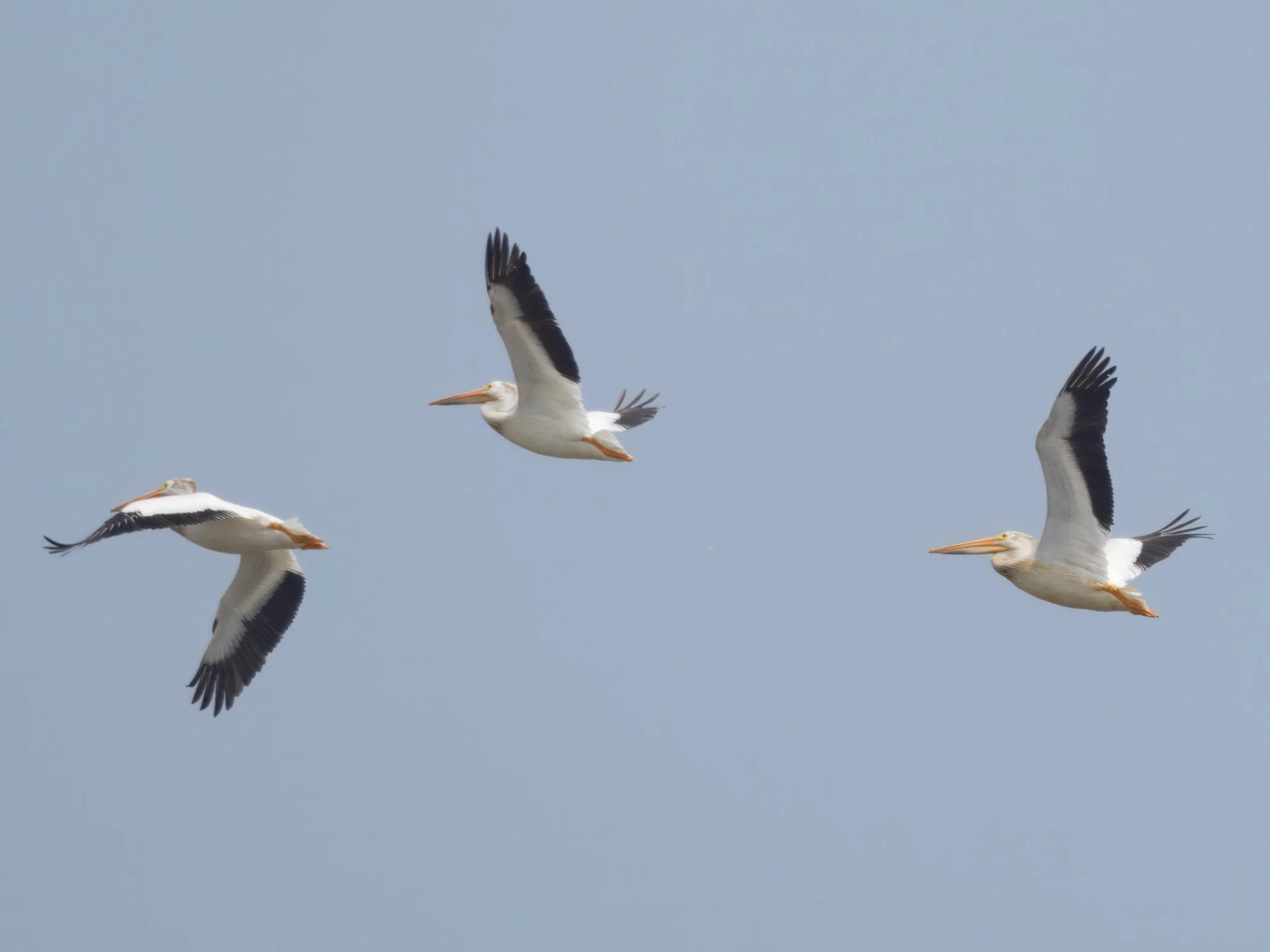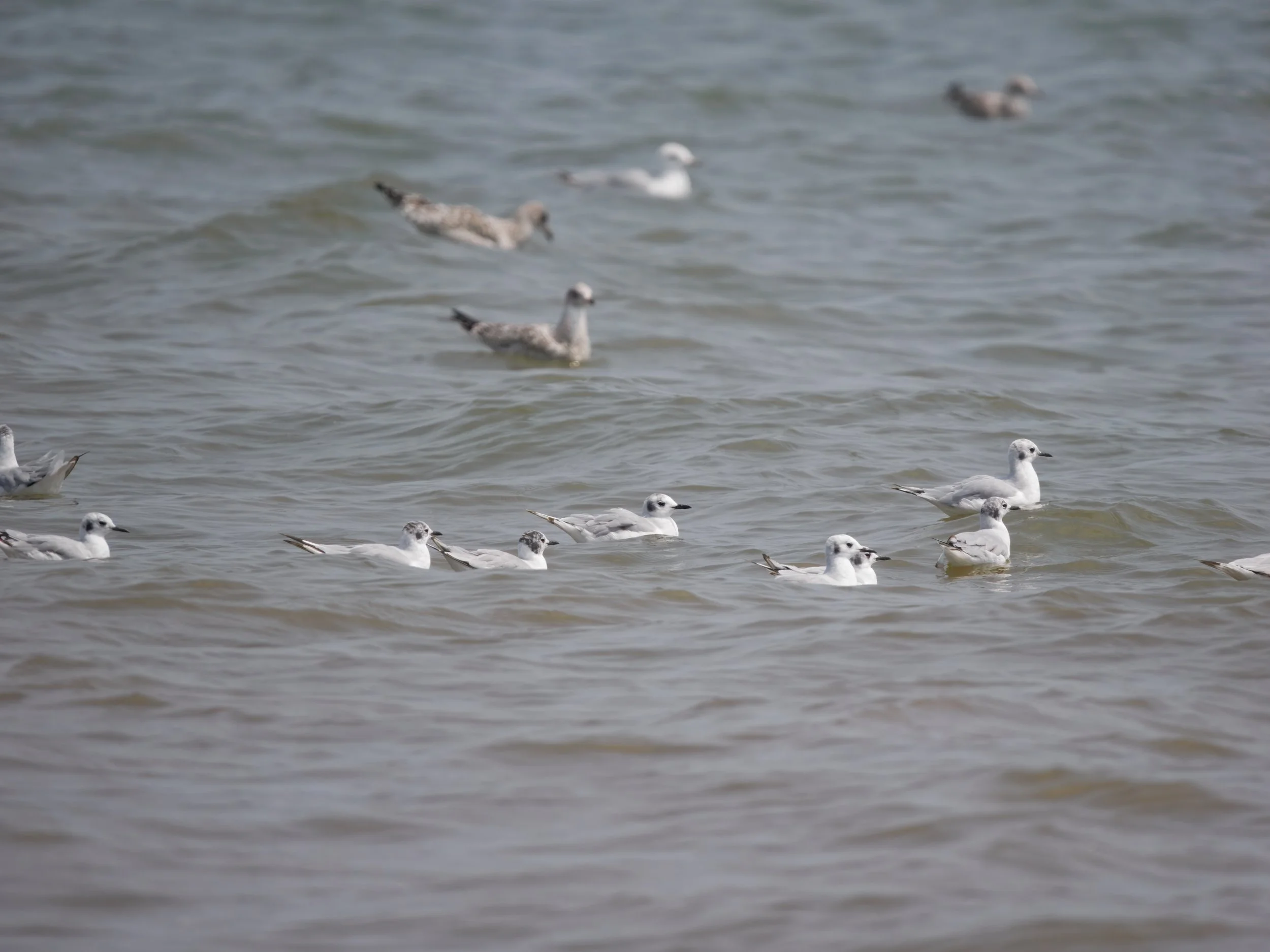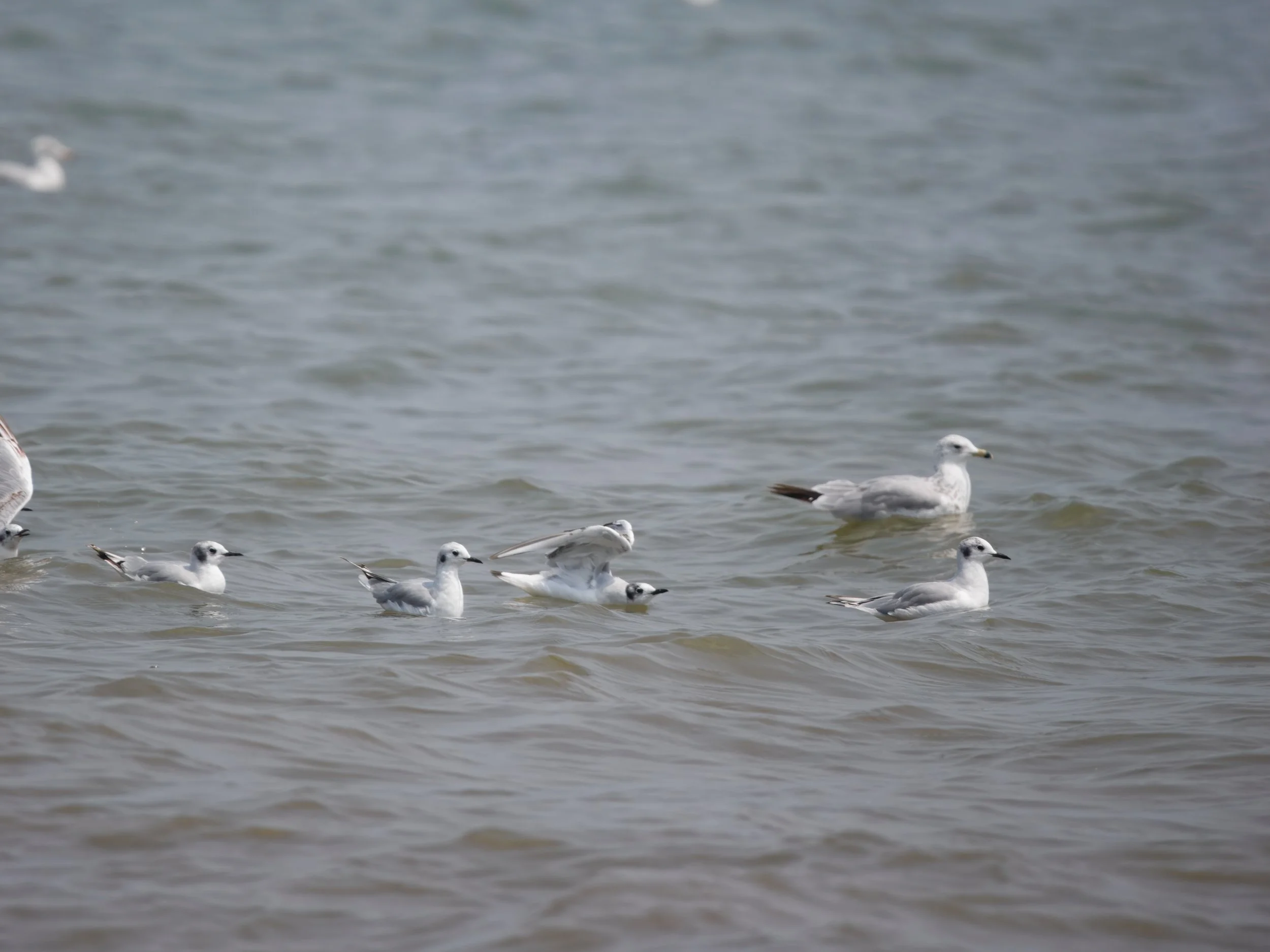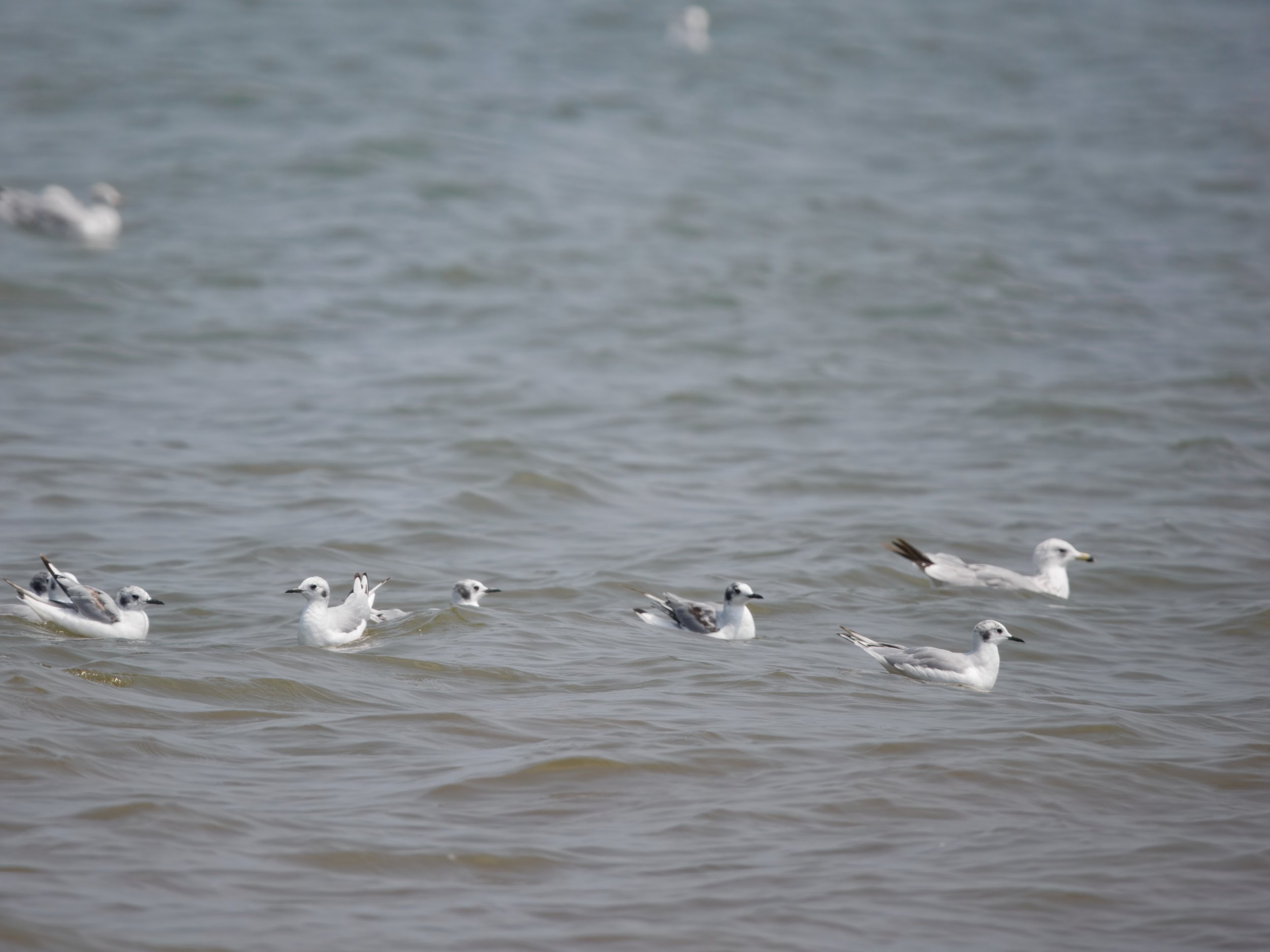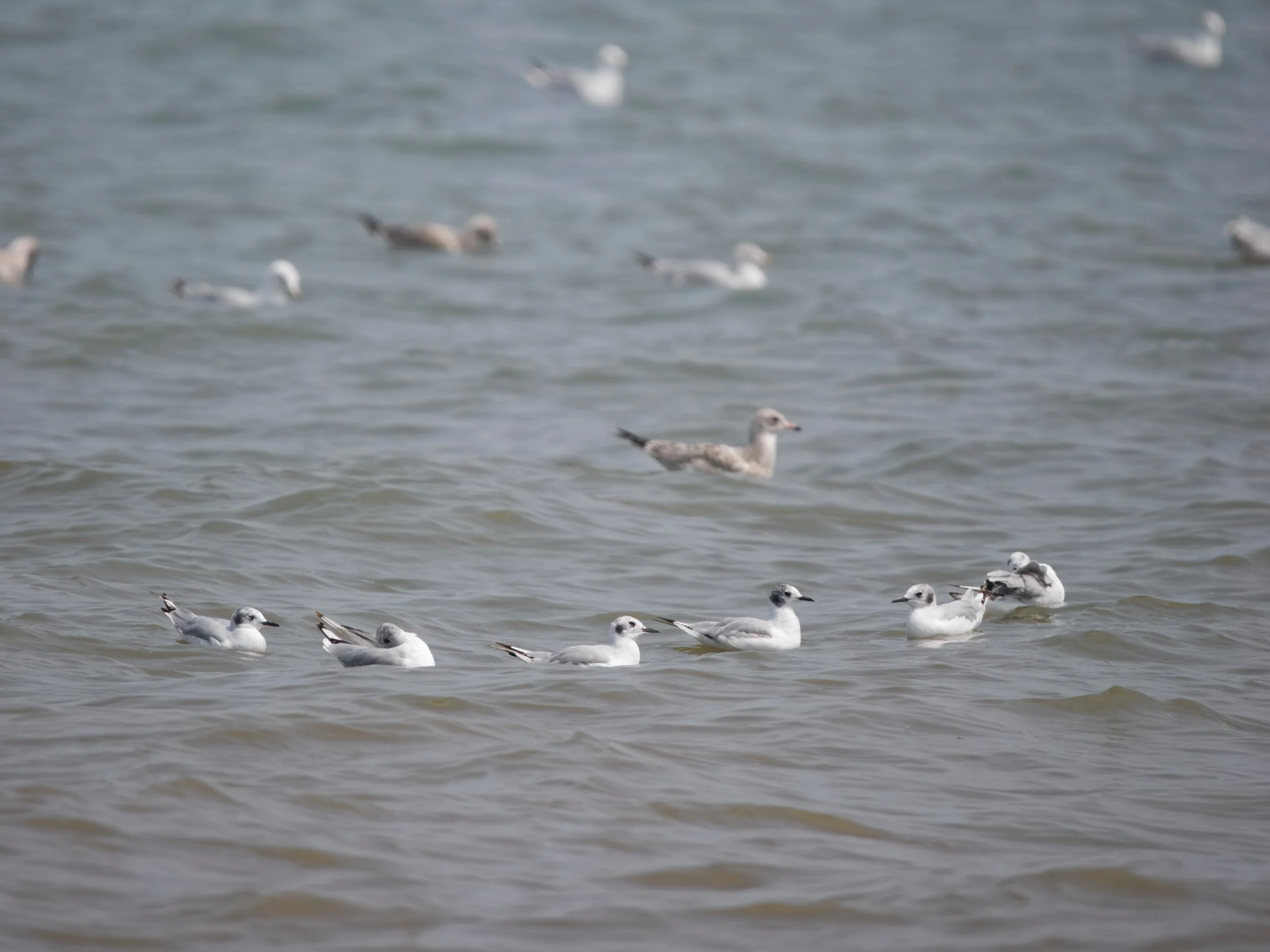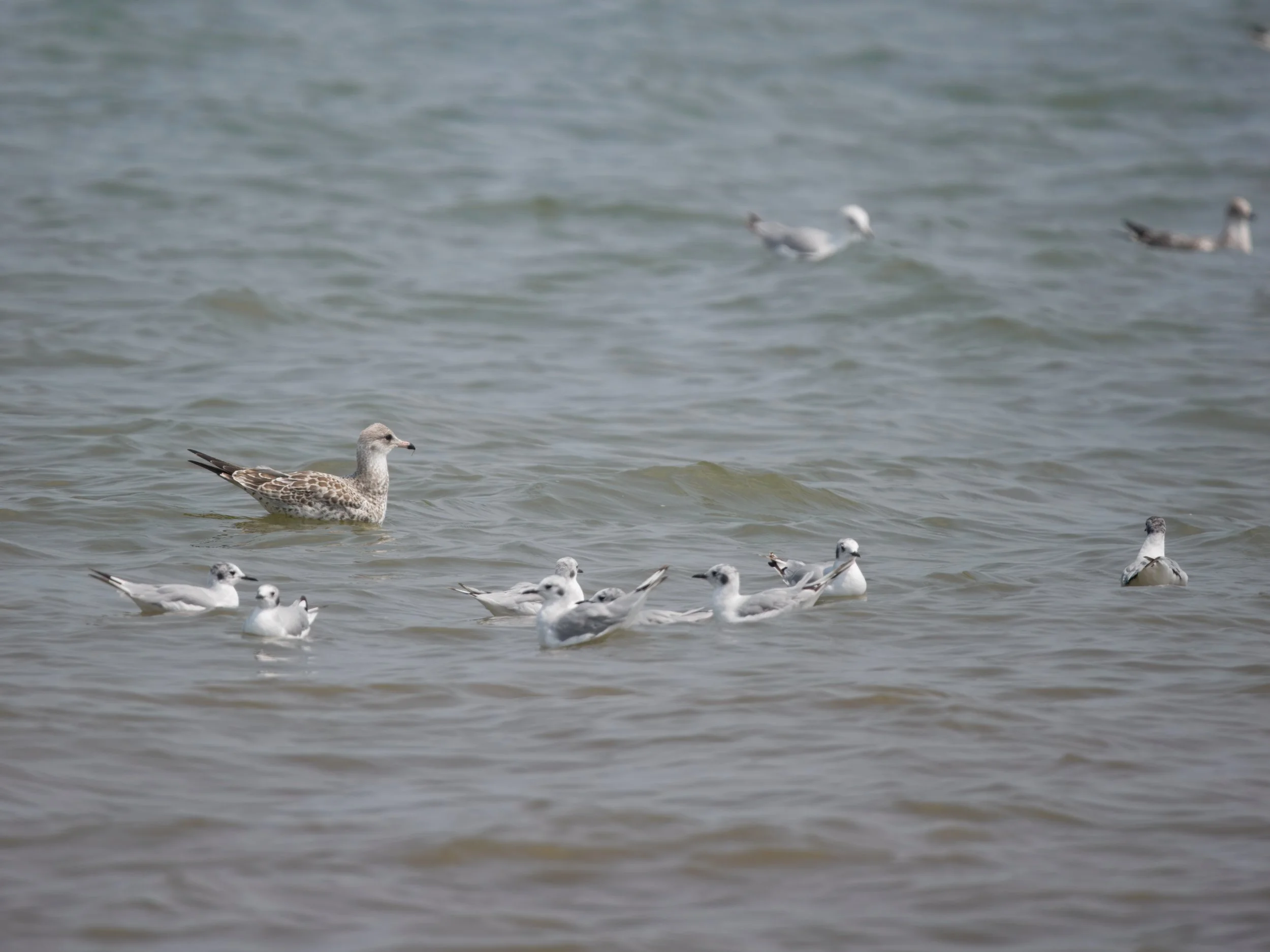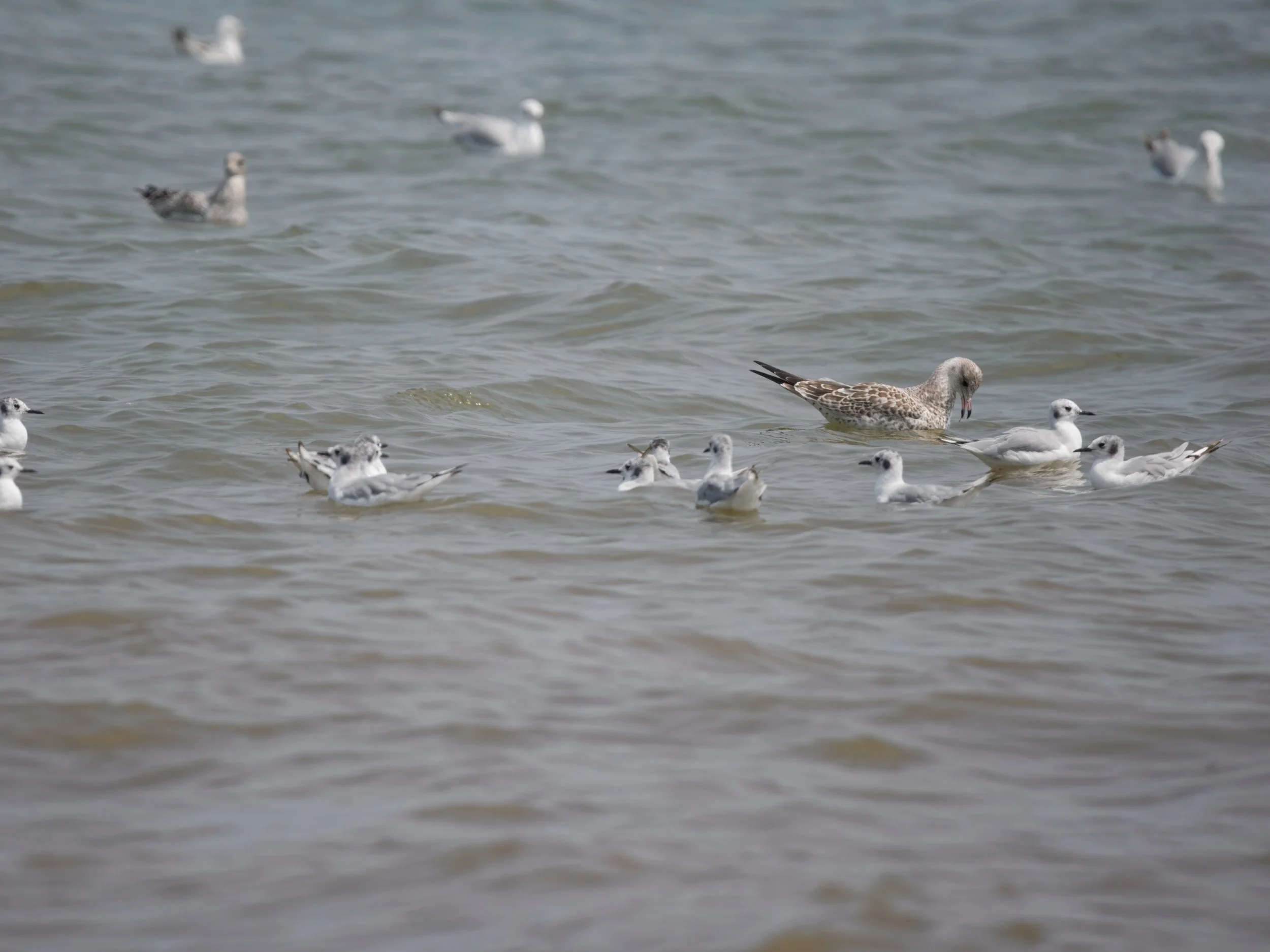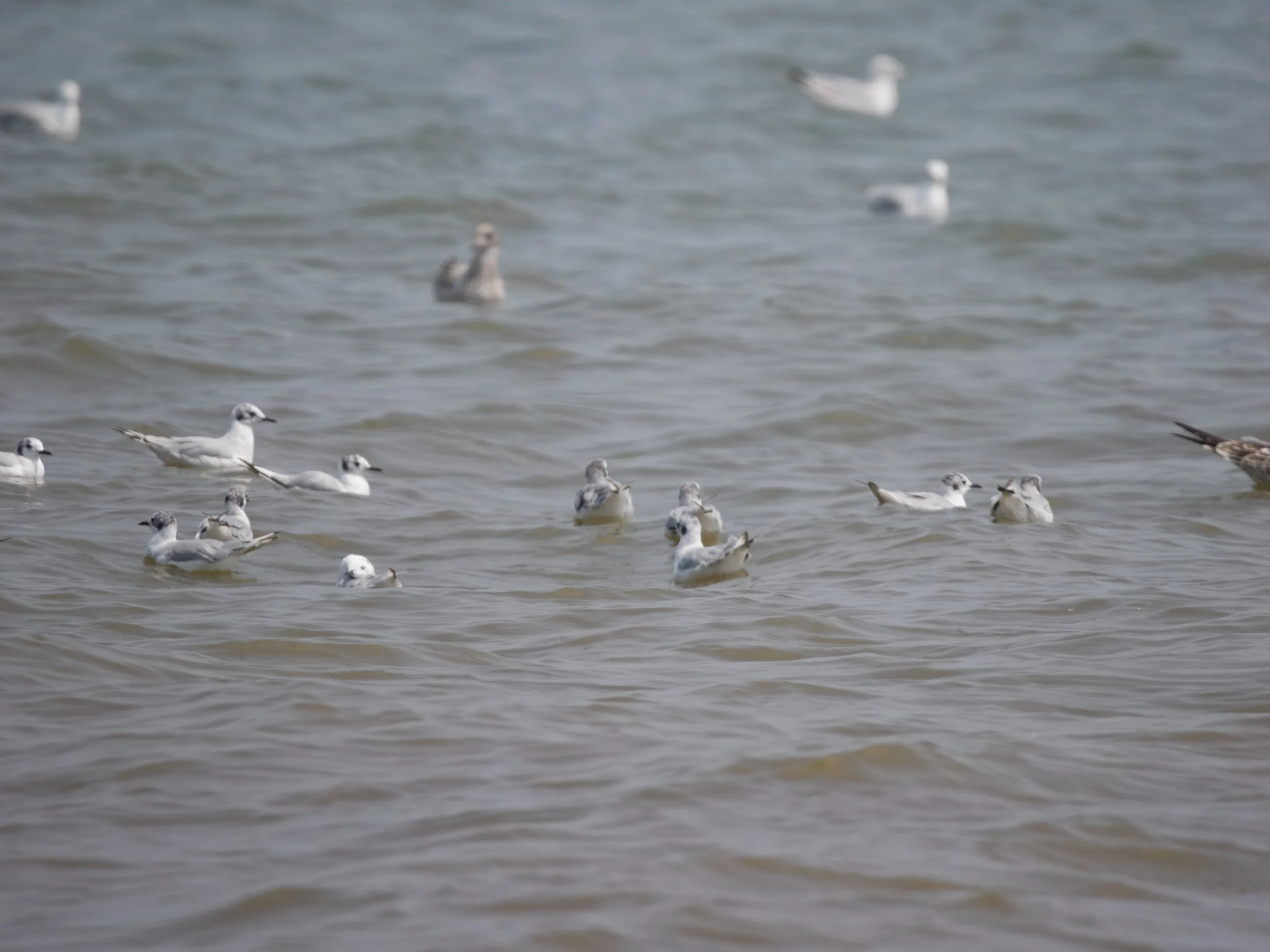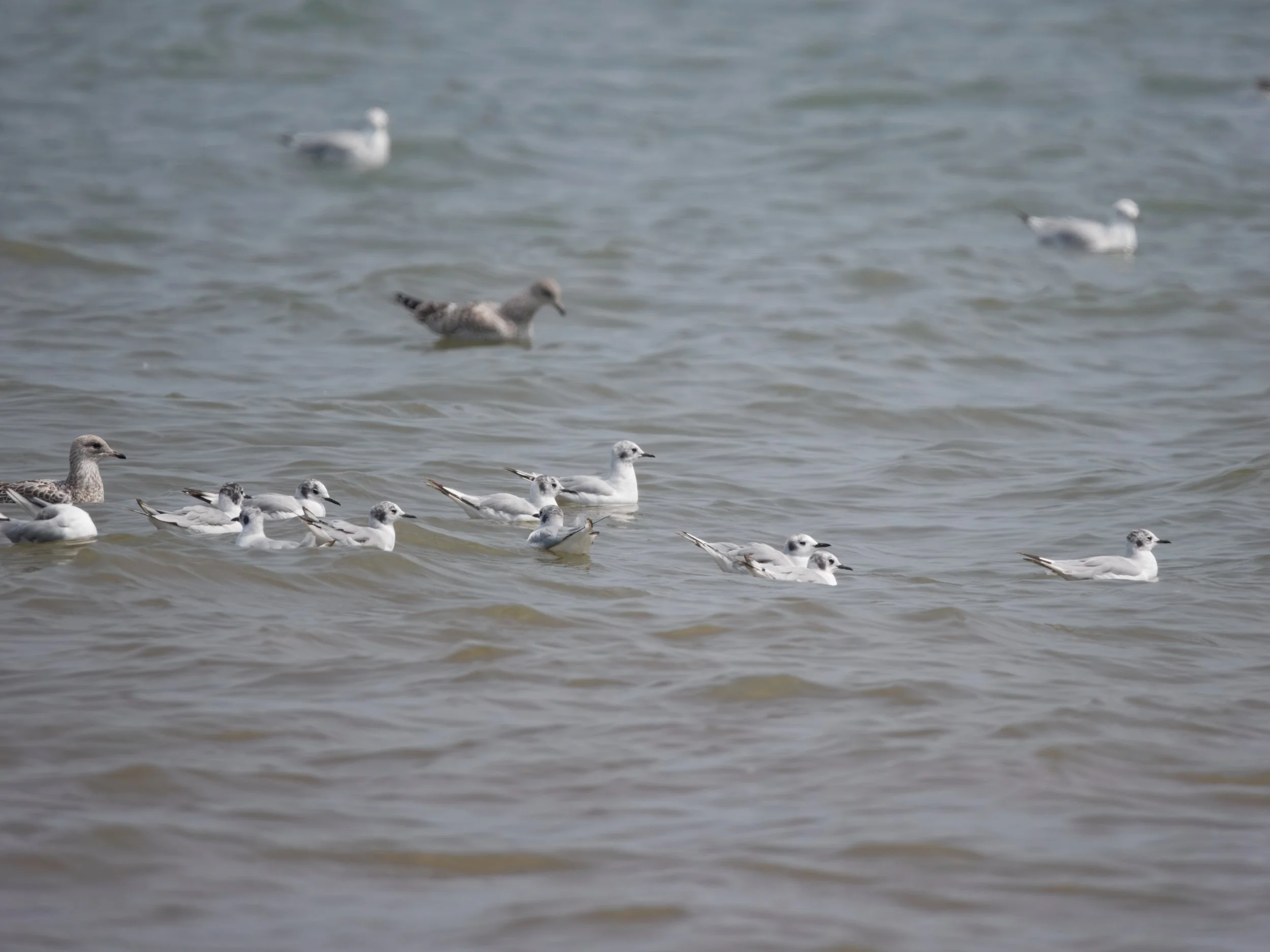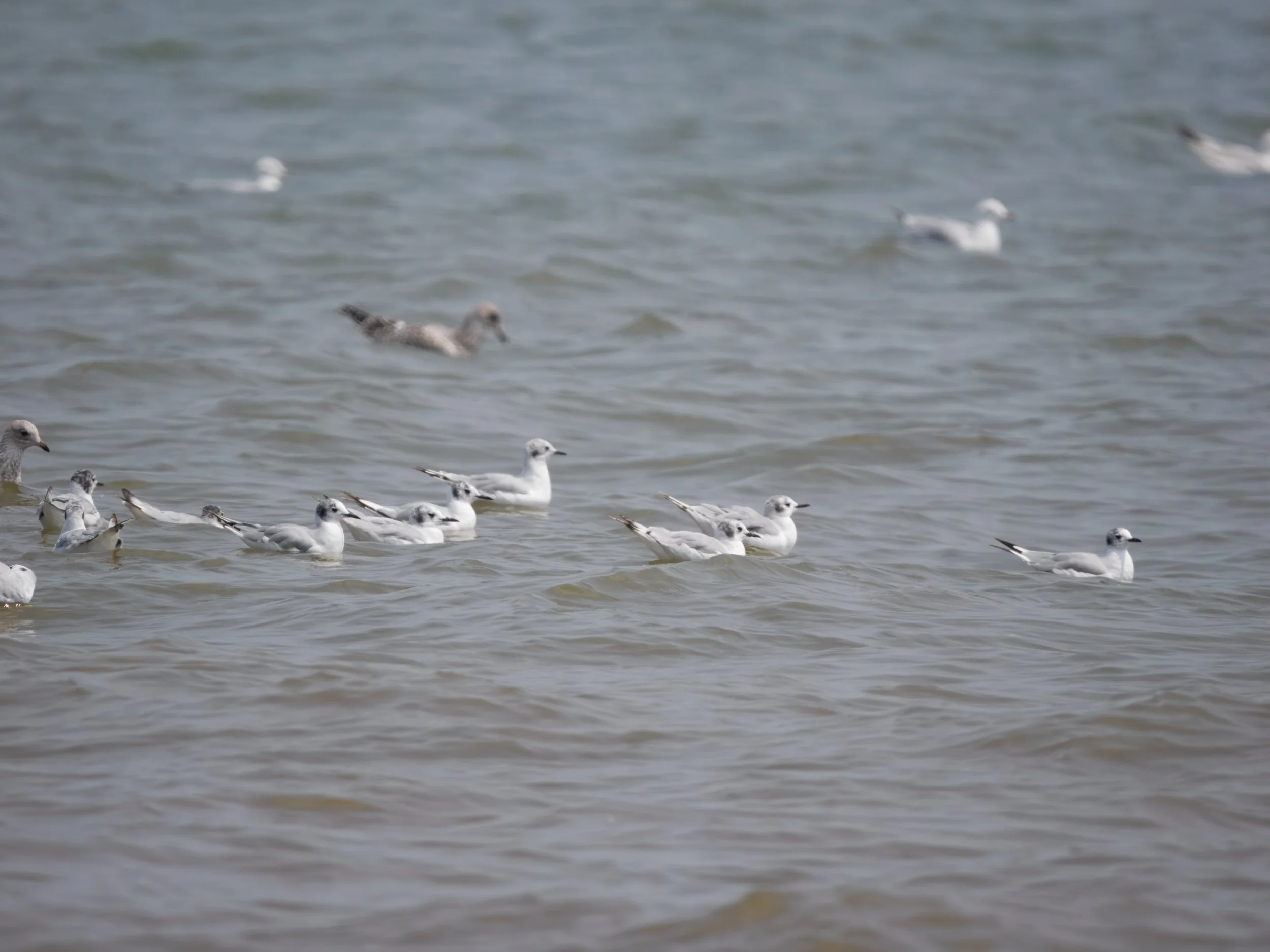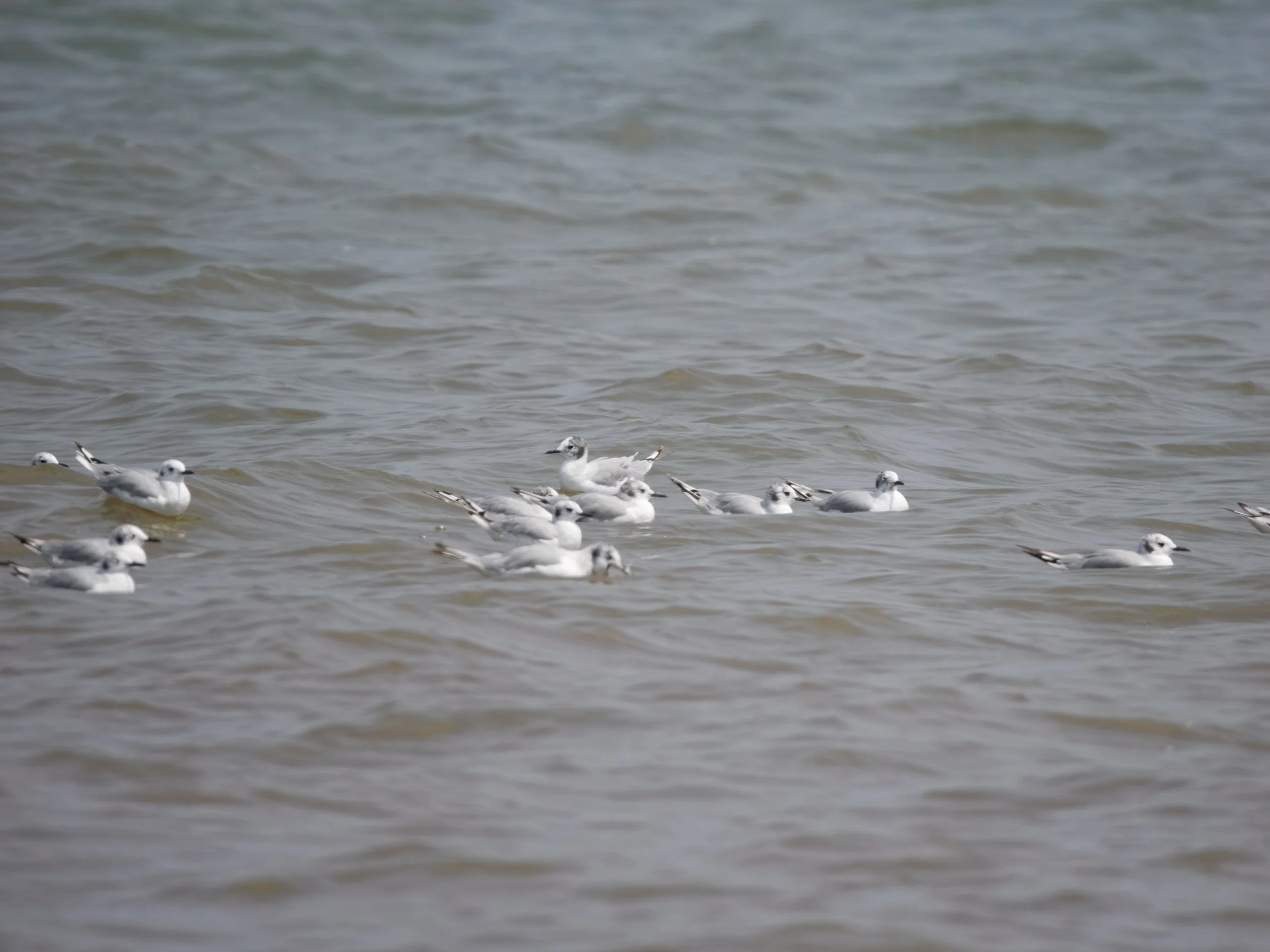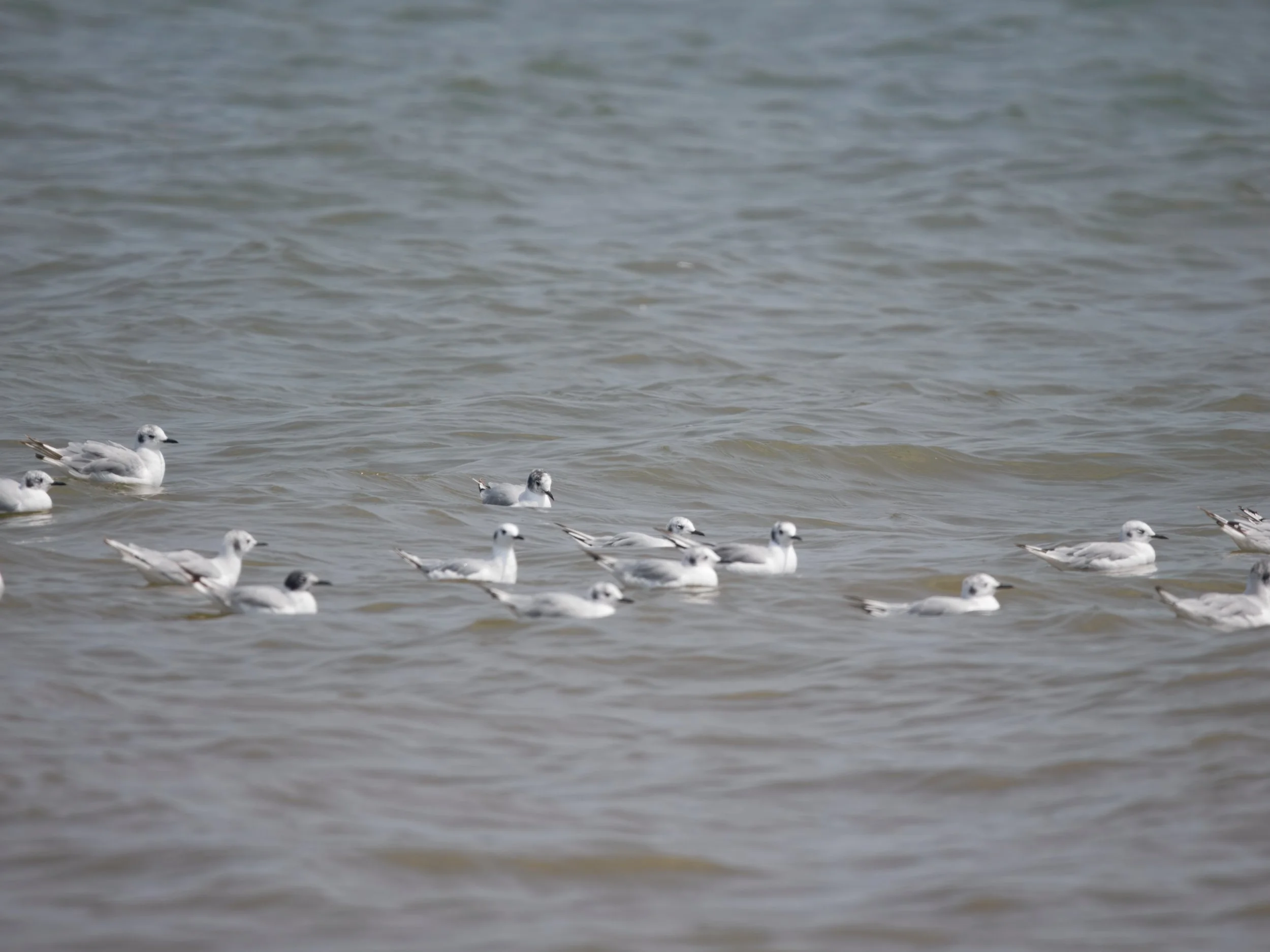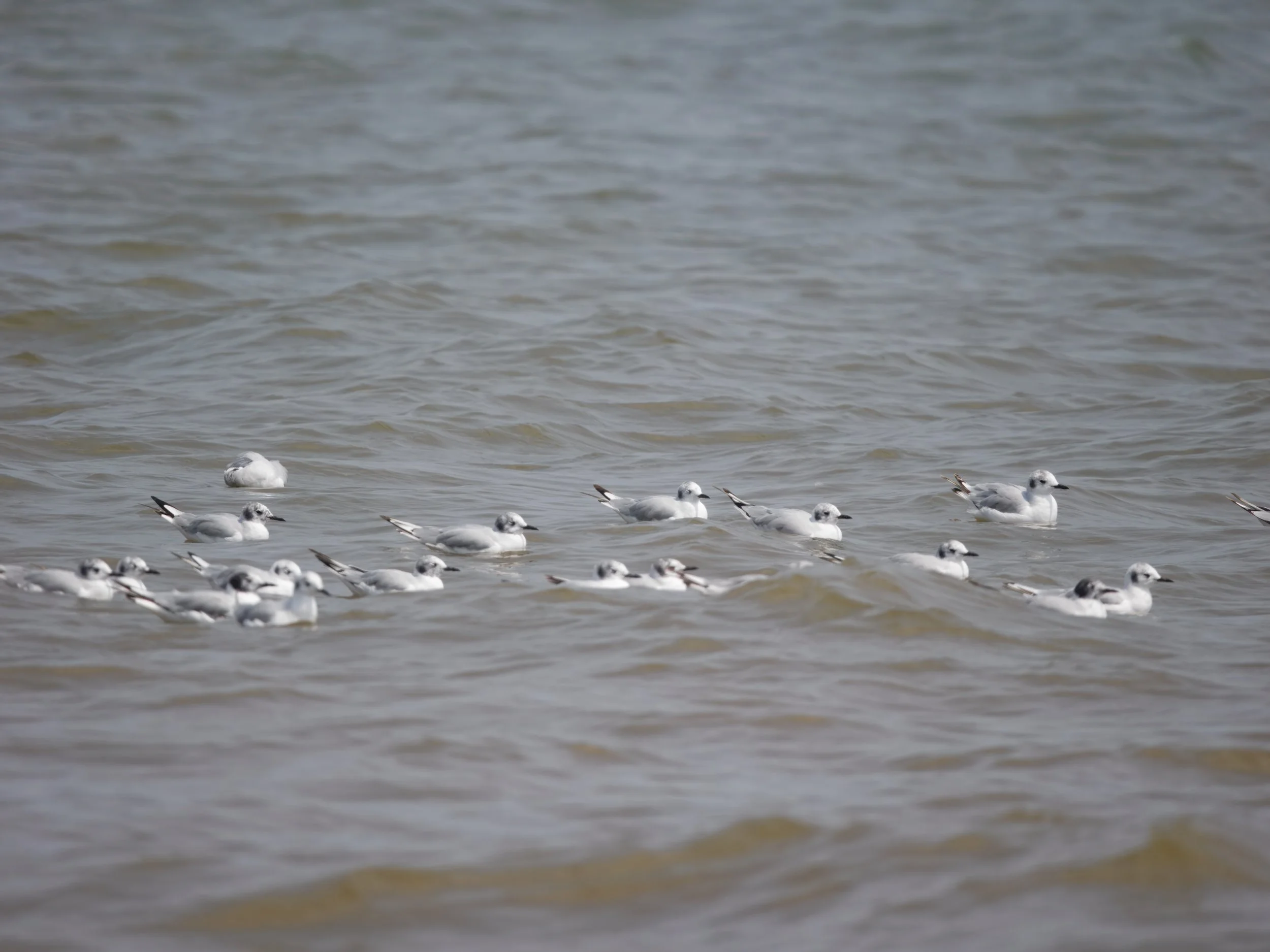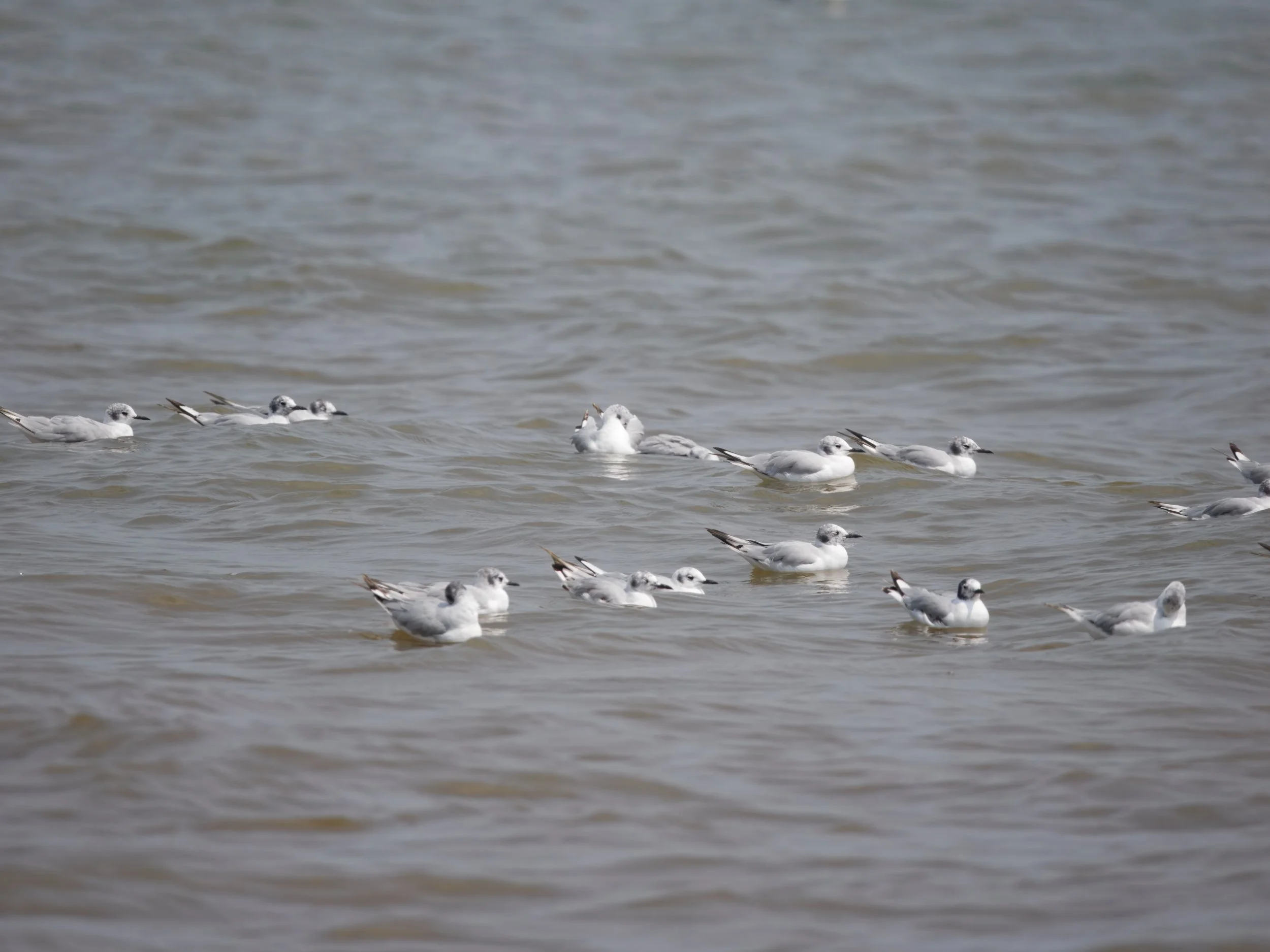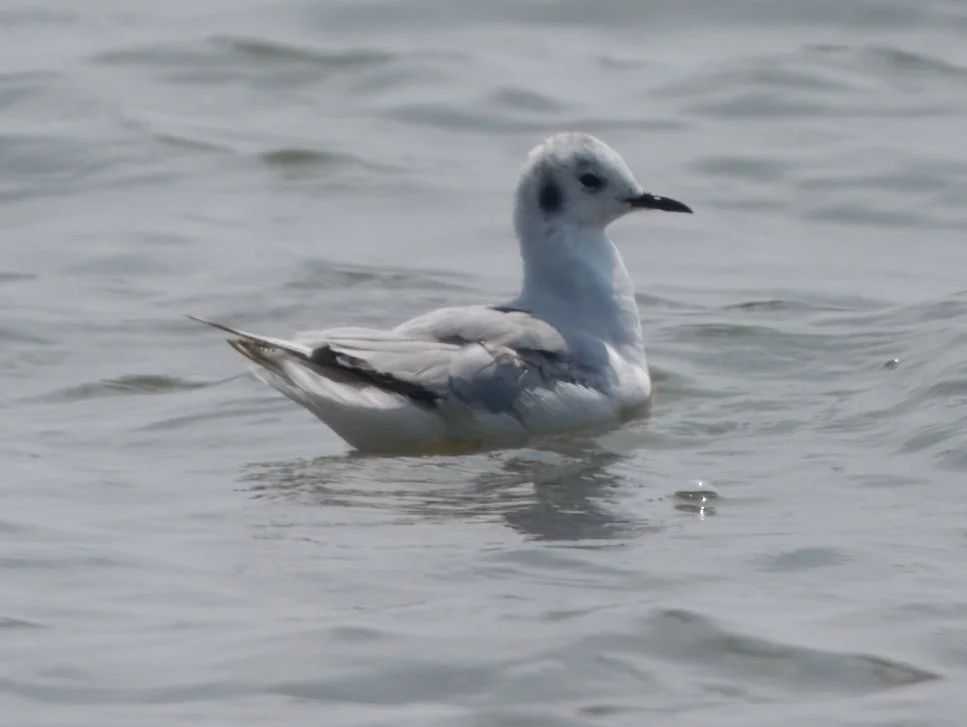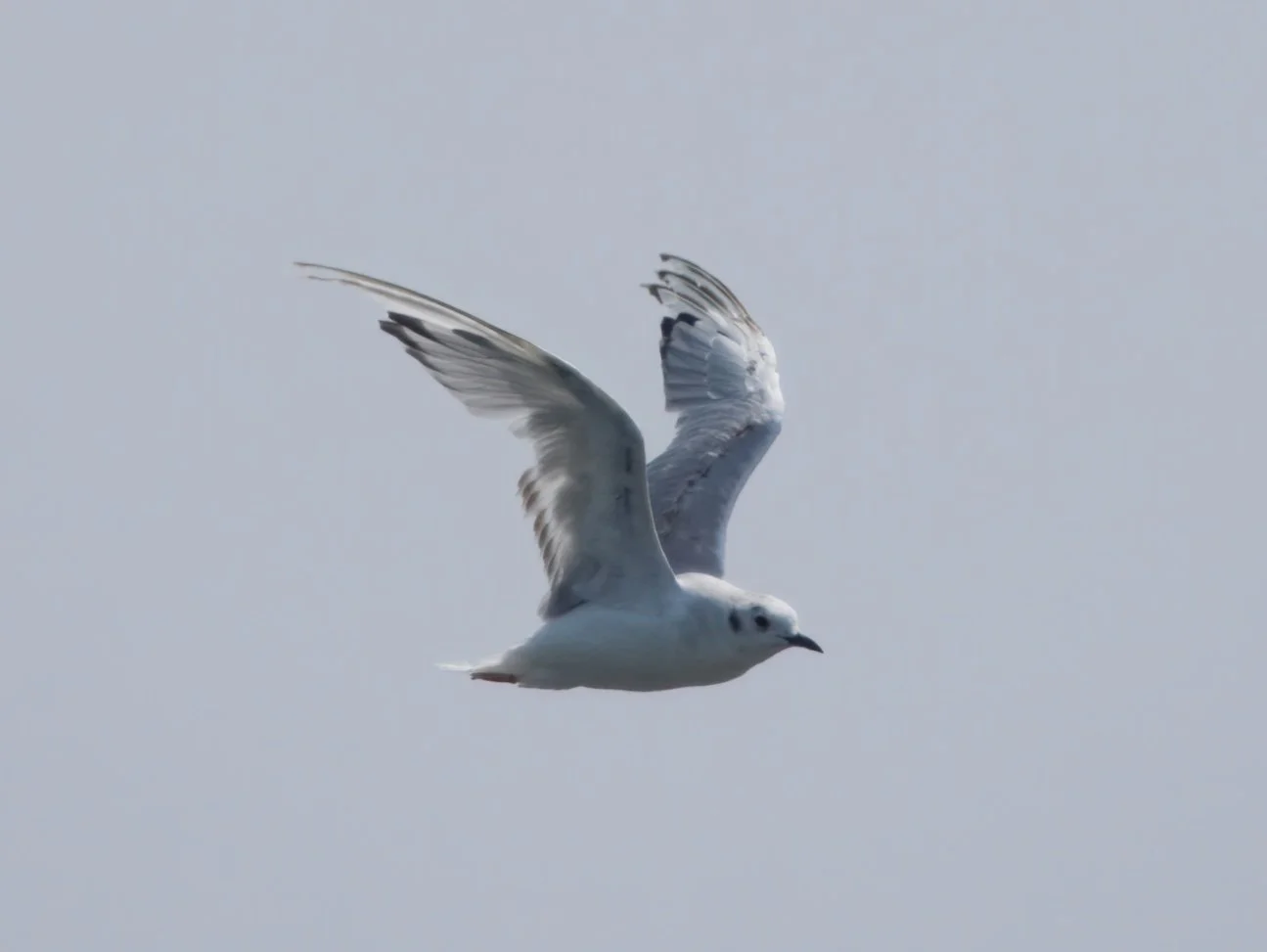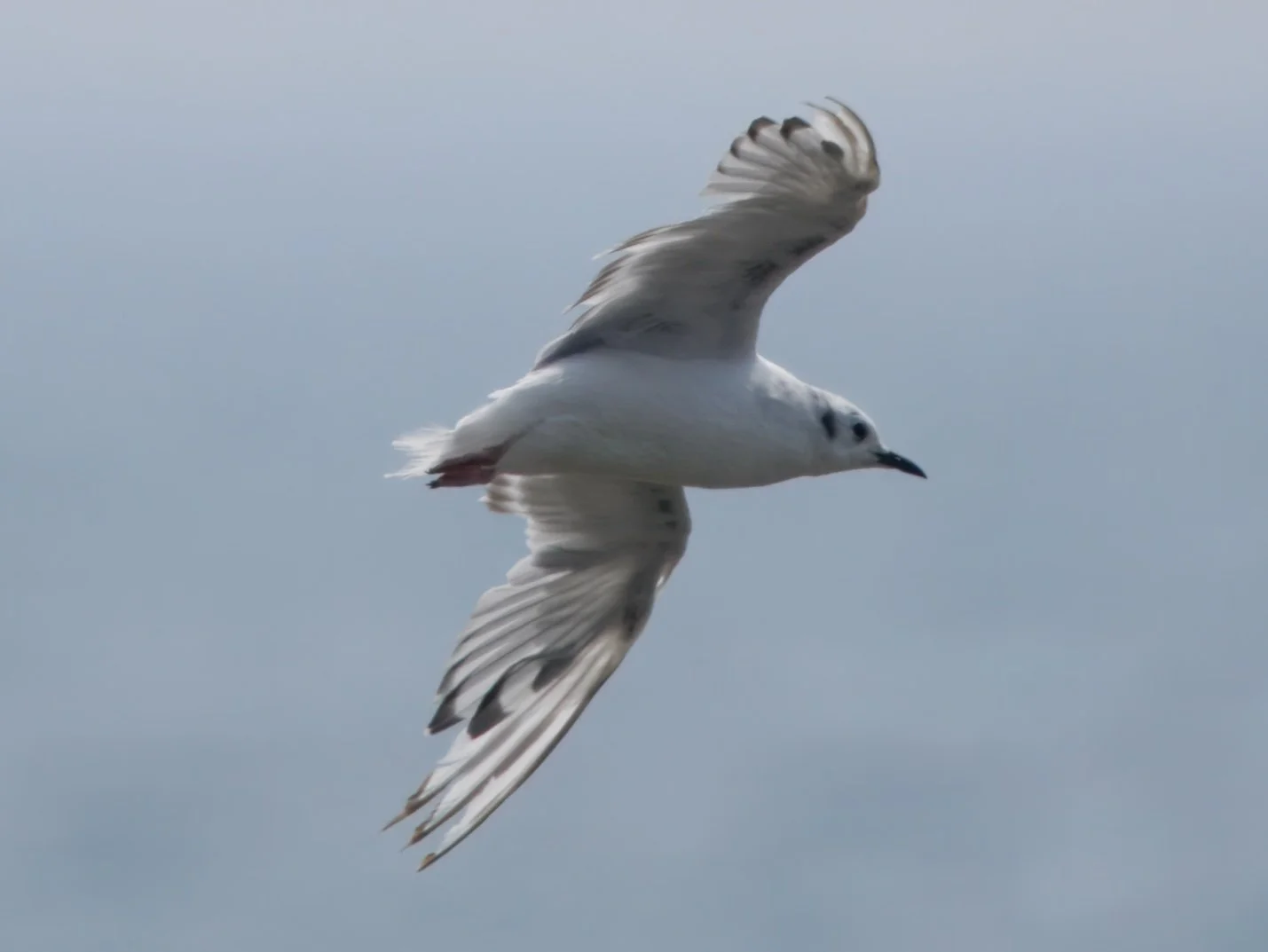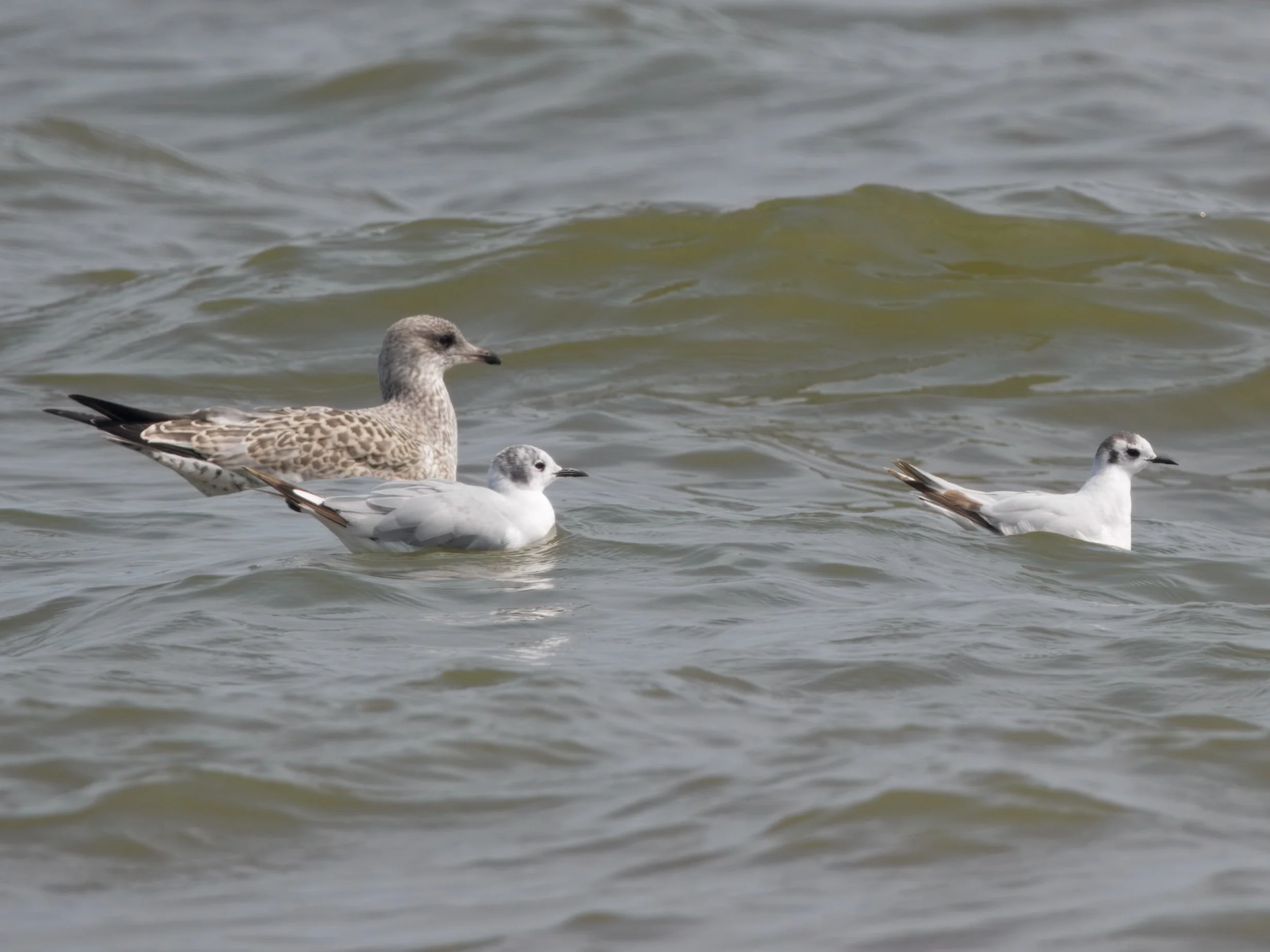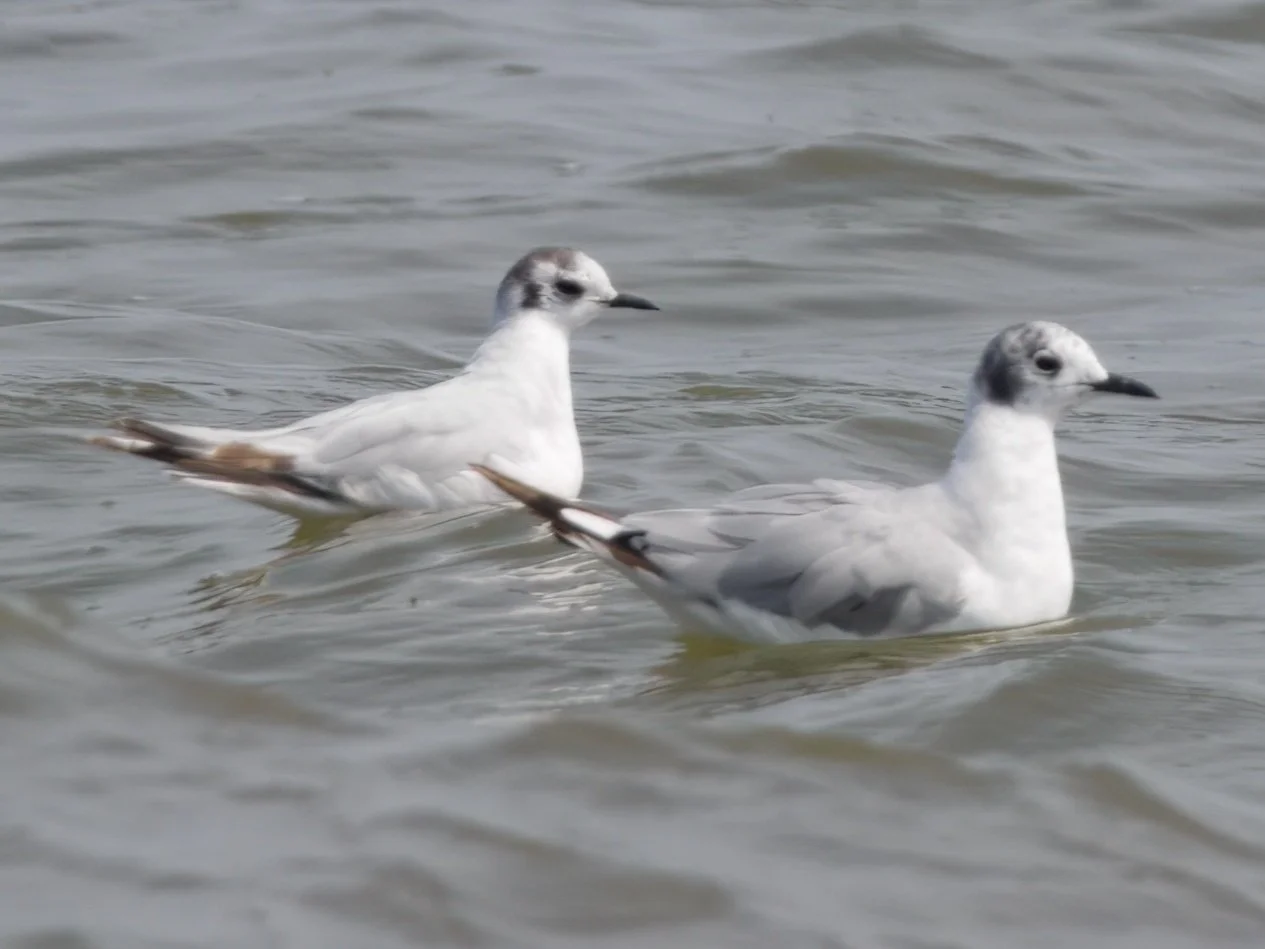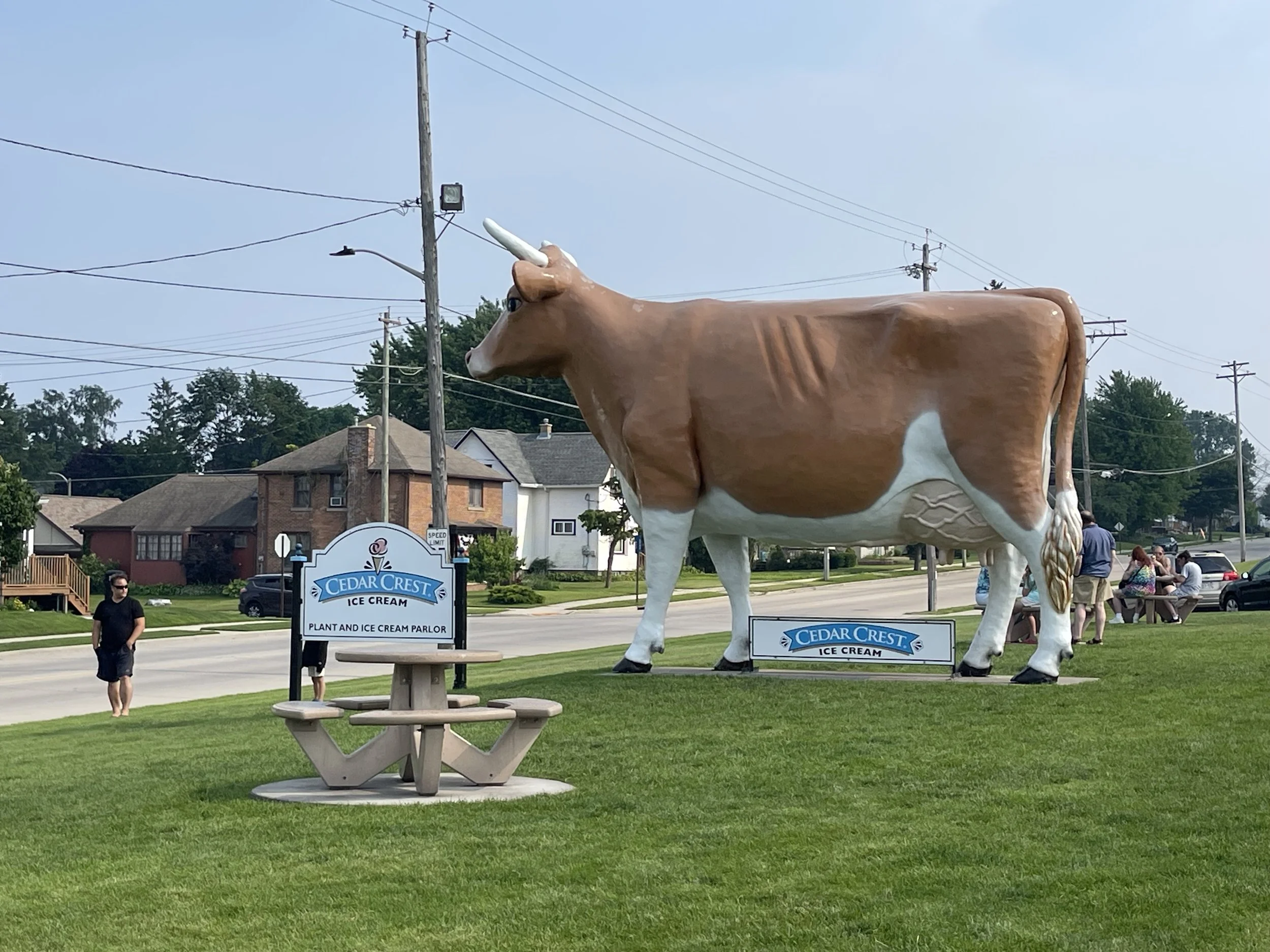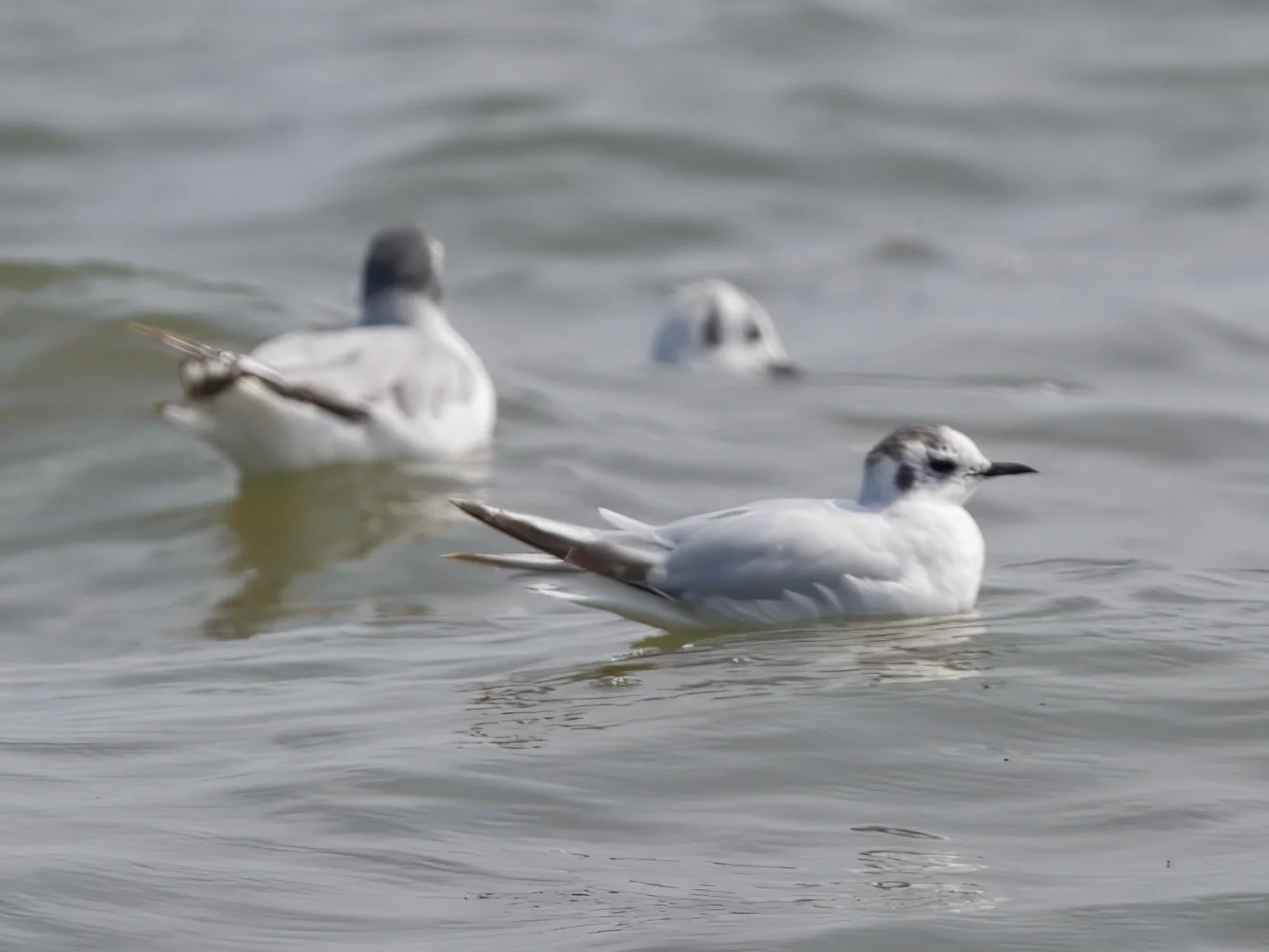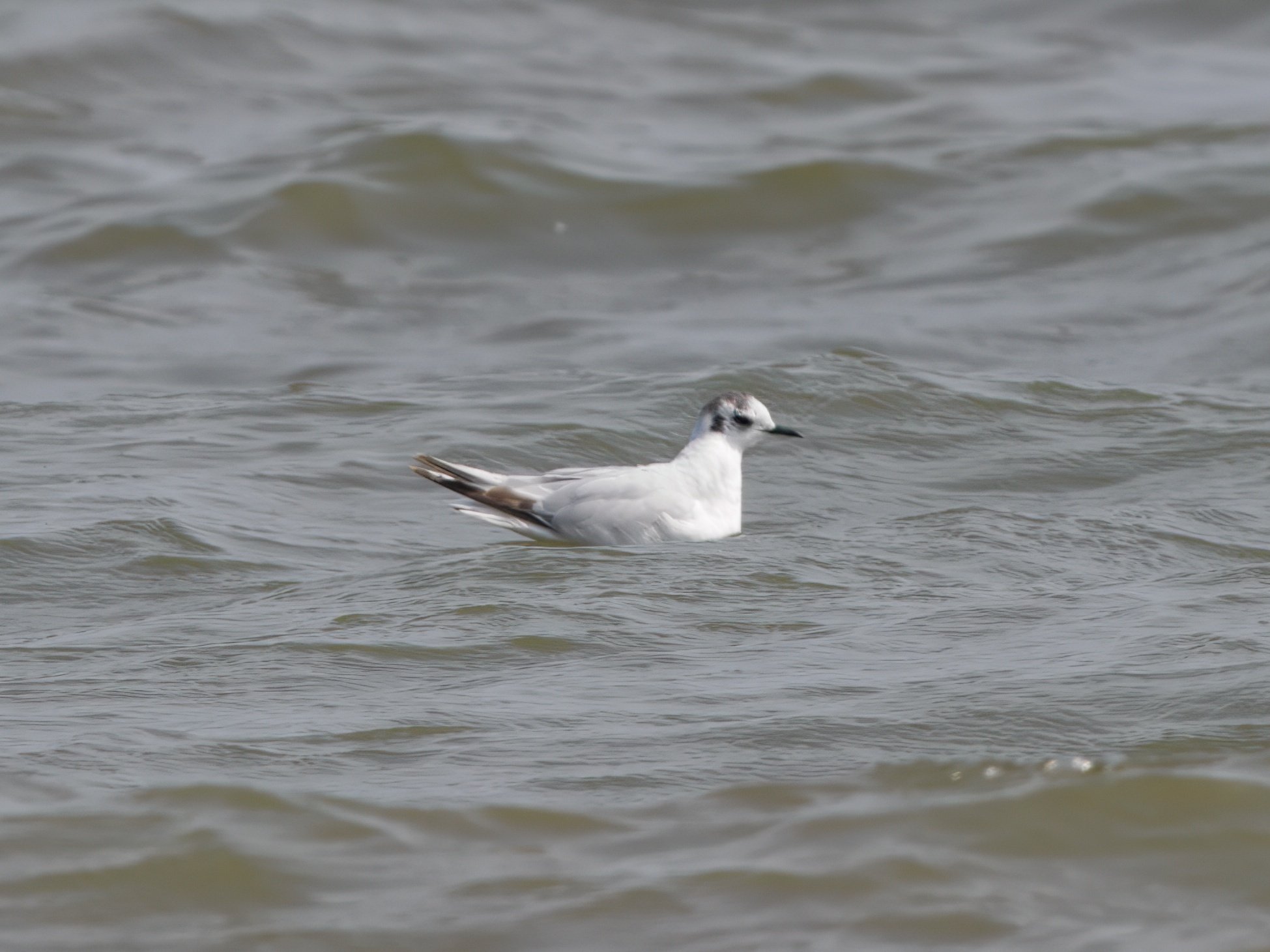
Little Gull
#1,032
Two Rivers, Wisconsin
2025 July 13th (Sunday)
On finding the Little Gull surfing the gentle waves of Lake Michigan along the beach at Two Rivers, Wisconsin.
In what has become an annual event, a Little Gull was documented along the lakeshore between Manitowoc and Two Rivers, Wisconsin, this summer. In fact, at least two, maybe three, had been seen along this stretch of Lake Michigan. This included at least one adult and one younger bird in non-breeding plumage.
What makes this species special not just for the state but for the lower 48 United States is its infrequency. The Little Gull is predominately an Old World Species, residing in Eurasia. However, it does appear with regularity along the Atlantic Coast of the eastern USA, as well as some sites inland, including Two Rivers/Manitowoc. Why the Little Gull returns to these sites in North America year after year remains a mystery. According to Birds of the World by Cornell Lab or Ornithology, some theories for their appearance here on the continent range from transatlantic colonizations from Western Europe to migration over the Bering Sea. I prefer the former theory, since it would make sense for this gull to follow the St. Lawrence Seaway from the Atlantic Coast to the Great Lakes.
A well-known behavioral feature of the Little Gull is that it tends to associate more often with Bonaparte’s Gulls than with other species. While this is a useful method to identify potential colonies of gulls along a body of water, it does create headaches in differentiating the two species, a conundrum which I will discuss shortly.
——
After thirty-six hours of being on-call at work, I decided to sleep in Sunday. I had been ambitious in thinking I could get up 7am and make the three-hour roundtrip between Milwaukee and Manitowoc in search of the Little Gull. Perhaps due to the fact I did not return from work until 8pm Saturday night, after seeing new consults that came in towards shift change, I found my bed and pillows quite inviting.
It wouldn’t be until noon when I finally got ready and make the long drive northward.
Fortunately, the weather was pleasant: Temperatures in the 70s-80s, sunny with some clouds, a mild breeze. There was a noticeable haze, likely due to the seemingly eternal Canadian wildfires in the western part of that country. The drive was otherwise uneventful with little traffic
As the Little Gulls have been noted to move along the lakeshore between Manitowoc and Two Rivers, I had to plan where the best location to locate them would be. The day before, it was seen in Two Rivers near the Lighthouse Inn. Arriving just after 1pm, I parked near a beach access at the hotel, and started my “gull-combing” along the shore.
——
The beach was quiet, with only a handful of locals soaking in rays from the gentle Wisconsin sun on the sand. I set up my scope to scan the water. Ring-billed Gulls and American Herring Gulls dotted the horizon, but neither Bonaparte’s nor Little Gulls were present.
A nice surprise was the pod of American White Pelicans gliding overhead and diving for fish. I remember when these birds were absent from the state. Over the past 20-30 years, their populations have recovered, and now, at least since I’ve started birding five years ago, I have seen countless pelicans every year in Wisconsin. They have even ventured down to Milwaukee!
Alas, today’s target was not in view, so I ventured north along the beach towards the marina. Along the way, I encountered a family of Killdeer and a couple of Spotted Sandpipers. The smell of alewives and decaying vegetation along the beach were, to put it politely, noticeable.
——
At last! Bonaparte’s Gulls! A whole colony rested on the waves between the Lighthouse Inn and the pier.
It was only when I set up my scope did I realize a major hurdle: As this is towards the end of the summer breeding period for many gulls, several individuals showed different stages of molting. Some adults still retained their dark black hoods, some were showing signs of wear. The vast majority, however, were in non-breeding plumage.
What I failed to appreciate before birding today was how similar Bonaparte’s and Little Gulls can appear in non-breeding plumage. Of course, it would be nice if the recently photographed adult Little Gull, with its dark black head sans white eye-ring and small bill, decided then and there to settle among the Bonaparte’s Gulls to showcase its lilliputian stature. The Little Gull is, after all, the smallest gull in the world.
This last fact is not helpful when they are on the water!
Just when I felt I identified a potential non-breeding or juvenile Little Gull, I would lose it in the crowd or behind a wave. Some of the Bonaparte’s Gulls were kind enough to fly around and allow for better identification and appreciation.
Bonaparte’s Gulls are larger than Little Gulls (obviously), but this may not necessarily be apparent on the water. By larger, a difference of 1-2 inches separates the two species. In breeding plumage, an adult Bonaparte’s Gull will have a noticeable black hood enveloping the entire head, except for a noticeable broken white “arc”, similar to an albino Pac-Man eating the eye from behind. This head pattern is still noticeable in adults that are molding from breeding into non-breeding plumage.
The underwings of a Bonaparte’s Gull will be white or at least pale, unlike the Little Gull’s dark coloration. However, feathers may appear worn-out from a distance.
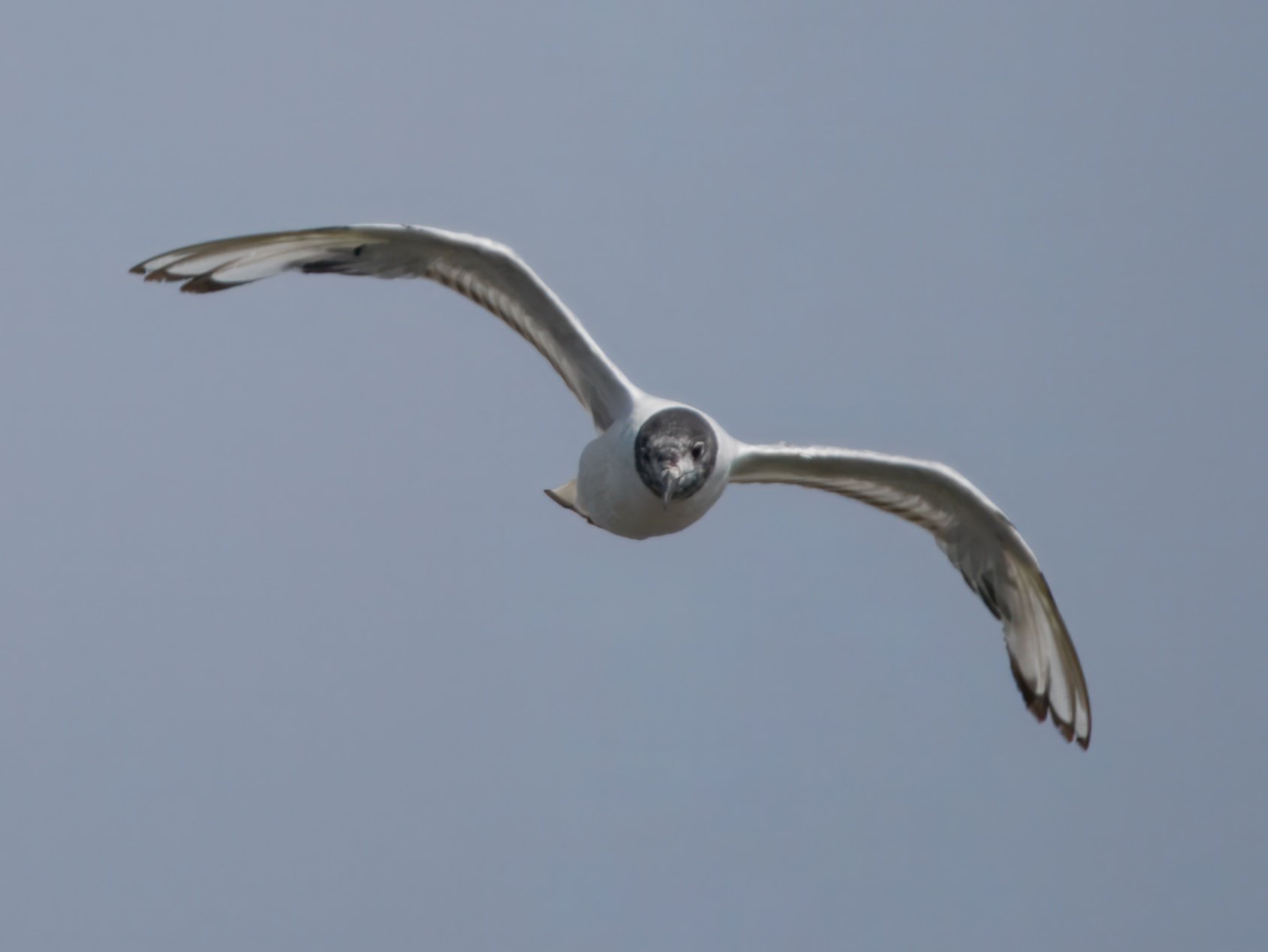

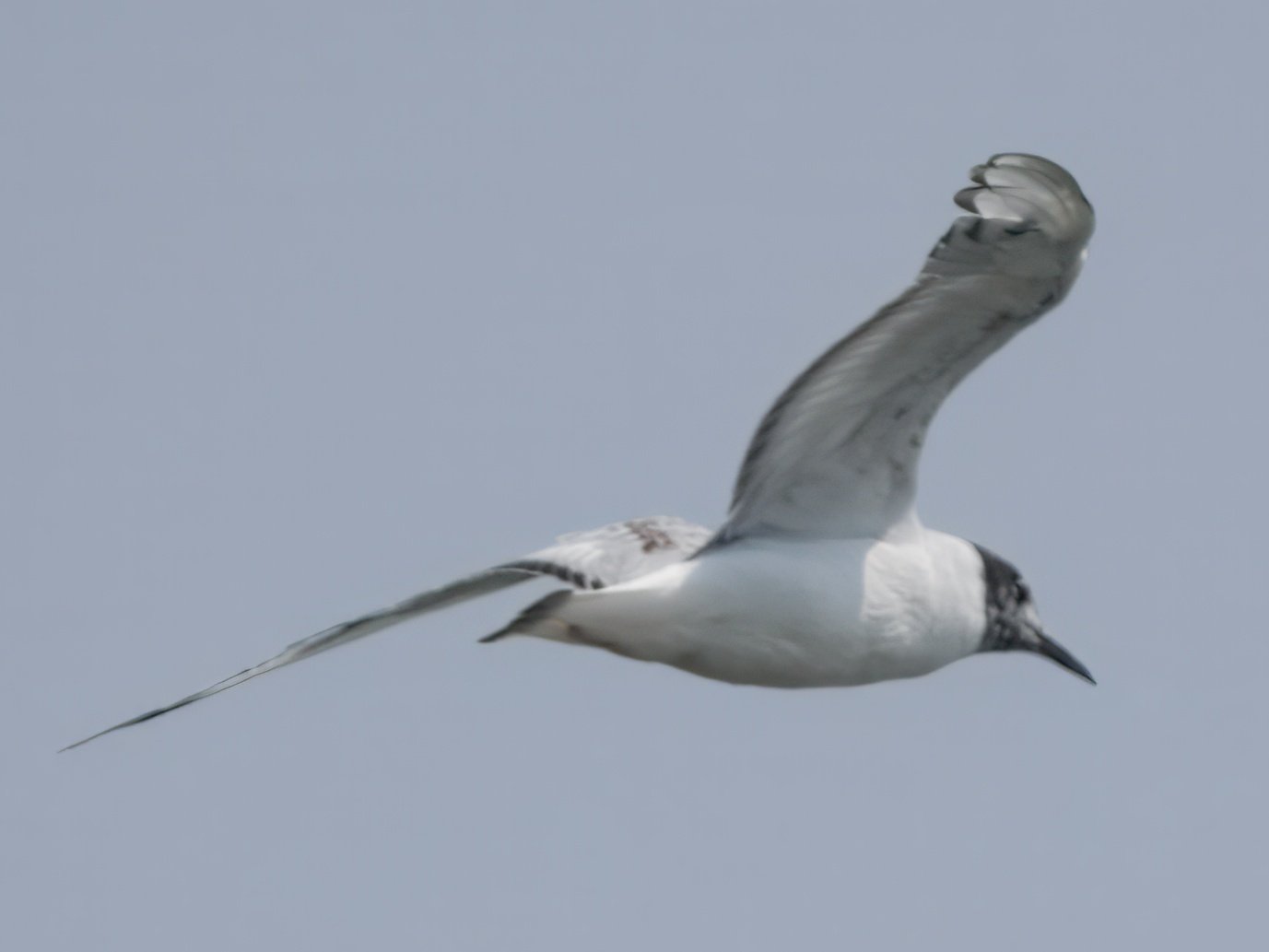
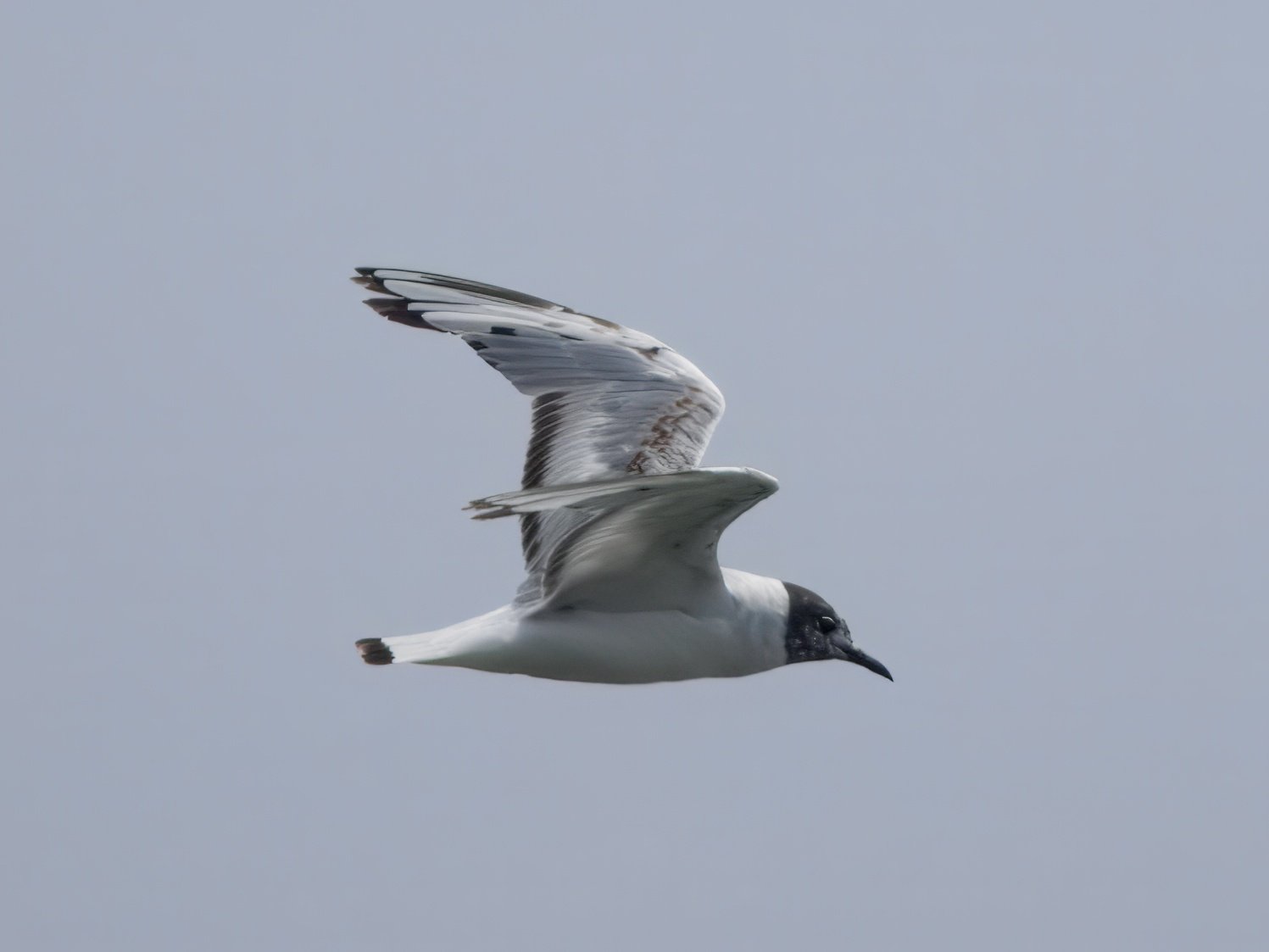
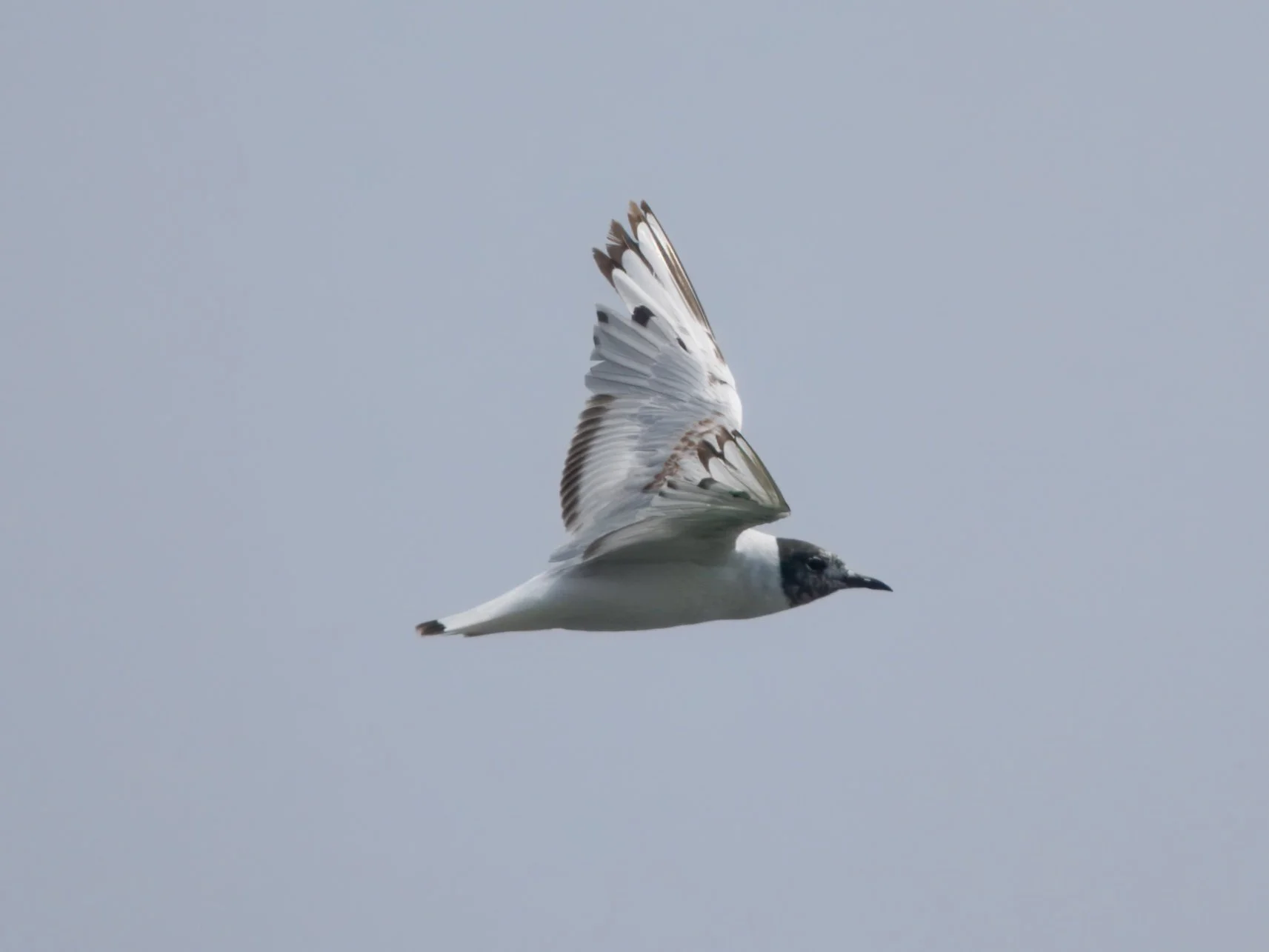
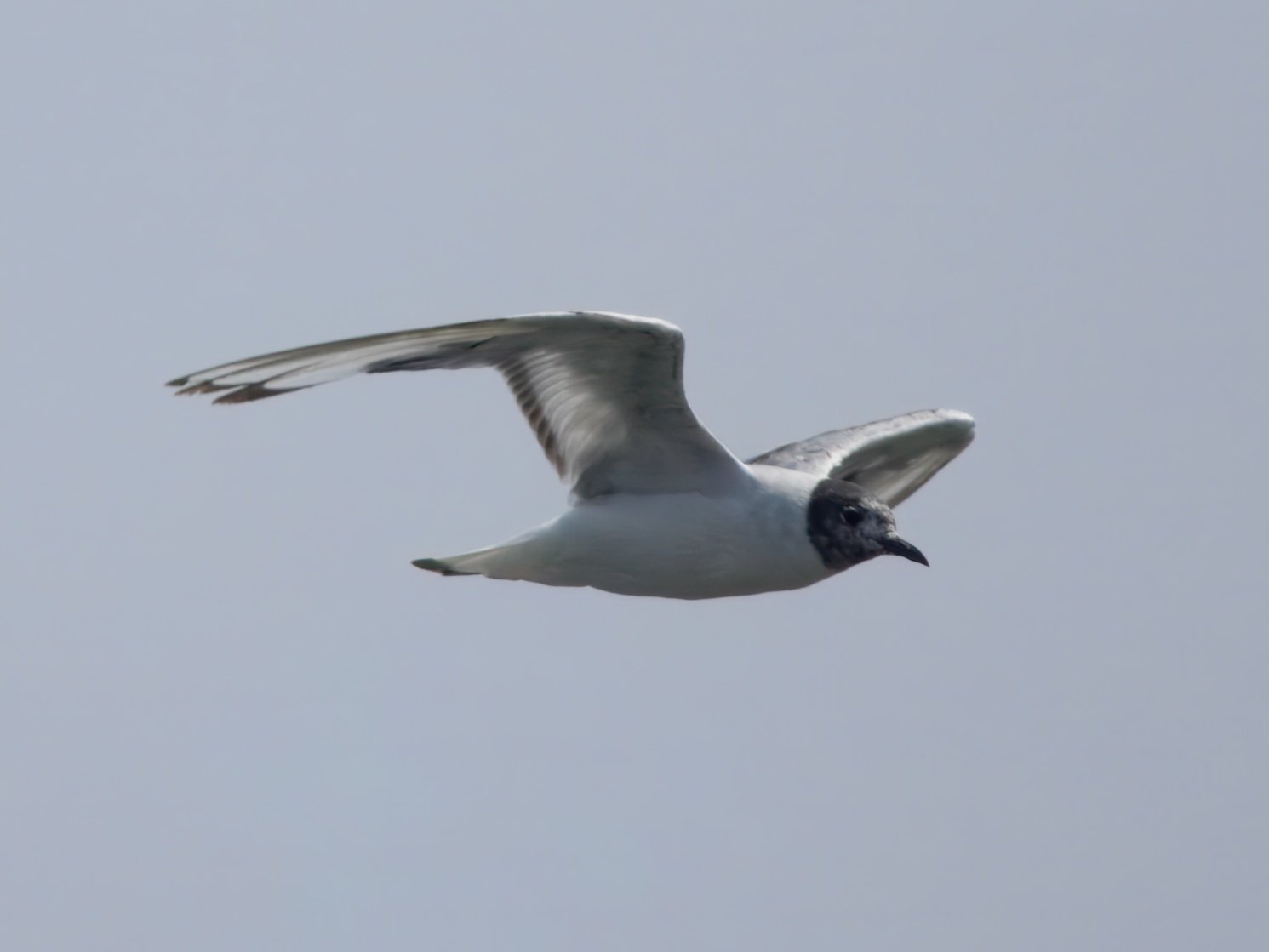
In contrast, non-breeding Bonaparte’s Gulls may show varying degrees of black on the head, but will almost universally showcase a black “smudge” behind the eye on either side.
Otherwise, they appear rather pale with a grayish tint on the back and mantle.
——
After two hours scouring the waters, I became quite confident in my skills in identifying Bonaparte’s Gulls. Though I appreciate and am (slowly) learning the nuances of different cycles and plumages of gulls as they age, I am not yet a “guller”—unlike my Mom, whose favorite bird from her trip to Italy this year was the Yellow-Legged Gull in Venice that looked like Scuttle from the 1989 animated feature The Little Mermaid. As much as I liked looking at the Ring-billed, American Herring, and Bonaparte’s Gulls, I could not locate the Little Gull.
I was about to head back to the car, when I saw a fairly small gull swimming by itself on the periphery of the raft of Bonaparte’s Gulls.
By golly, I think I finally found it!
I didn’t want this to be a repeat of my previous misidentification episodes, so I took extra time to analyze this lone gull.
It was clearly in non-breeding plumage, maybe even in transition from first-summer to second-winter. The black bill was demonstrably smaller, narrower, and, lest it becomes a cliche, “dainty”. While it had a dark, black patch behind both eyes, it had a noticeable but washed-out dark cap.
The eyes appeared fully black without hints of a white broken “arc” or other eye-ring.
The primaries did have black on the outsides, but this may be seen in younger individuals.
In muted excitement, I gave out a quiet cheer of accomplishment! Now, I could go home and feel confident about my discovery.
That, and just as I located the Little Gull, the regional eBird reviewer for Manitowoc and the surrounding area walked up and confirmed my sighting.
How did I celebrate the Little Gull? With a scoop of Key Lime Pie and Black Walnut from Cedar Crest Ice Cream at the local plant, of course!
——
Thank you for taking time to read my blog post, and I hope you learned something new about the many splendid gulls of Wisconsin.
Until next time, wherever the birds may bring me.
Bibliography:
Websites:
birdsoftheworld.org
ebird.org
Books:
Ayyash, Amar. The Gull Guide: North America. Princeton University Press, 2024.
Dunne, Pete, and Kevin T. Karlson. Gulls Simplified: A Comparative Approach to Identification. Princeton University Press, 2018.
Olsen, Klaus Malling. Gulls of the World: A Photographic Guide. Princeton University Press, 2018.
Disclosure: Unless otherwise stated, the copyright for all entries and media featured on this blog or on my IG account, @mke_birder, belongs solely to me. If you would like to use any of my content, please message me to obtain written consent. Remember, please be a kind and responsible digital neighbor.

